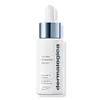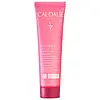What's inside
What's inside
 Key Ingredients
Key Ingredients

 Benefits
Benefits

 Concerns
Concerns

 Ingredients Side-by-side
Ingredients Side-by-side

Water
Skin ConditioningPEG-8
HumectantGlycerin
HumectantMethylpropanediol
SolventPropanediol
SolventPPG-24-Glycereth-24
Emulsifying1,2-Hexanediol
Skin ConditioningXylitylglucoside
HumectantButylene Glycol
HumectantHydroxyethyl Urea
HumectantPanthenol
Skin ConditioningHydroxyacetophenone
AntioxidantLactic Acid
BufferingHyaluronic Acid
HumectantSodium Hyaluronate
HumectantDunaliella Salina Extract
Skin ConditioningAvena Sativa Kernel Extract
AbrasiveCitrus Aurantium Bergamia Fruit Oil
MaskingCitrus Paradisi Peel Oil
MaskingCitrus Limon Peel Oil
MaskingSantalum Album Oil
MaskingLaminaria Digitata Extract
Skin ProtectingJasminum Sambac Flower Extract
MaskingChondrus Crispus Extract
Skin ConditioningGigartina Stellata Extract
Skin ProtectingMacrocystis Pyrifera Extract
Skin ConditioningPrunus Amygdalus Dulcis Oil
Skin ConditioningLithothamnion Calcareum Extract
Skin ConditioningCitrus Aurantium Dulcis Oil
MaskingCupressus Sempervirens Oil
MaskingCistus Ladaniferus Leaf/Stem Extract
MaskingJuniperus Virginiana Oil
MaskingRosmarinus Officinalis Flower/Leaf/Stem Extract
MaskingTagetes Minuta Flower Oil
MaskingRosa Damascena Flower
Skin ConditioningHydrolyzed Rice Protein
Skin ConditioningPentylene Glycol
Skin ConditioningSodium PCA
HumectantAnhydroxylitol
HumectantXylitol
HumectantPolyglutamic Acid
Skin ConditioningLactobacillus Ferment
Skin ConditioningLysine Hcl
Skin ConditioningBetaine
HumectantSclerotium Gum
Emulsion StabilisingSodium Lactate
BufferingPCA
HumectantGlucose
HumectantSerine
MaskingAlanine
MaskingGlycine
BufferingSilanetriol
Pantolactone
HumectantGlutamic Acid
HumectantThreonine
Arginine
MaskingProline
Skin ConditioningXanthan Gum
EmulsifyingTetrasodium Glutamate Diacetate
Polysorbate 20
EmulsifyingSorbitan Isostearate
EmulsifyingCitric Acid
BufferingSodium Hydroxide
BufferingHydroxyethyl Acrylate/Sodium Acryloyldimethyl Taurate Copolymer
Emulsion StabilisingAmylopectin
Hydroxyethylcellulose
Emulsion StabilisingSodium Benzoate
MaskingPotassium Sorbate
PreservativeLimonene
PerfumingLinalool
PerfumingWater, PEG-8, Glycerin, Methylpropanediol, Propanediol, PPG-24-Glycereth-24, 1,2-Hexanediol, Xylitylglucoside, Butylene Glycol, Hydroxyethyl Urea, Panthenol, Hydroxyacetophenone, Lactic Acid, Hyaluronic Acid, Sodium Hyaluronate, Dunaliella Salina Extract, Avena Sativa Kernel Extract, Citrus Aurantium Bergamia Fruit Oil, Citrus Paradisi Peel Oil, Citrus Limon Peel Oil, Santalum Album Oil, Laminaria Digitata Extract, Jasminum Sambac Flower Extract, Chondrus Crispus Extract, Gigartina Stellata Extract, Macrocystis Pyrifera Extract, Prunus Amygdalus Dulcis Oil, Lithothamnion Calcareum Extract, Citrus Aurantium Dulcis Oil, Cupressus Sempervirens Oil, Cistus Ladaniferus Leaf/Stem Extract, Juniperus Virginiana Oil, Rosmarinus Officinalis Flower/Leaf/Stem Extract, Tagetes Minuta Flower Oil, Rosa Damascena Flower, Hydrolyzed Rice Protein, Pentylene Glycol, Sodium PCA, Anhydroxylitol, Xylitol, Polyglutamic Acid, Lactobacillus Ferment, Lysine Hcl, Betaine, Sclerotium Gum, Sodium Lactate, PCA, Glucose, Serine, Alanine, Glycine, Silanetriol, Pantolactone, Glutamic Acid, Threonine, Arginine, Proline, Xanthan Gum, Tetrasodium Glutamate Diacetate, Polysorbate 20, Sorbitan Isostearate, Citric Acid, Sodium Hydroxide, Hydroxyethyl Acrylate/Sodium Acryloyldimethyl Taurate Copolymer, Amylopectin, Hydroxyethylcellulose, Sodium Benzoate, Potassium Sorbate, Limonene, Linalool
Water
Skin ConditioningVitis Vinifera Fruit Water
Skin ConditioningDicaprylyl Ether
EmollientGlycerin
HumectantButyrospermum Parkii Butter Extract
Skin ConditioningHexyldecanol
EmollientHexyldecyl Laurate
EmollientPalmitoyl Grape Seed Extract
Skin ConditioningBehenyl Alcohol
EmollientGlyceryl Stearate
EmollientAcrylates/C10-30 Alkyl Acrylate Crosspolymer
Emulsion StabilisingErythritol
HumectantLecithin
EmollientMannitol
HumectantTocopherol
AntioxidantCaprylyl Glycol
EmollientHelianthus Annuus Seed Oil
EmollientXanthan Gum
EmulsifyingSodium Benzoate
MaskingVitis Vinifera Juice
AntioxidantGlycine Soja Sterols
EmollientButylene Glycol
HumectantChamomilla Recutita Flower Extract
MaskingSodium Hydroxide
BufferingCitric Acid
BufferingSodium Carboxymethyl Beta-Glucan
CleansingSodium Citrate
BufferingSodium Phytate
Potassium Sorbate
PreservativeBiosaccharide Gum-1
HumectantSodium Hyaluronate
HumectantSodium Levulinate
Skin ConditioningGlyceryl Caprylate
EmollientHomarine Hcl
Skin ConditioningSodium Anisate
AntimicrobialAlcohol
AntimicrobialAcetyl Tetrapeptide-15
Skin ConditioningParfum
MaskingWater, Vitis Vinifera Fruit Water, Dicaprylyl Ether, Glycerin, Butyrospermum Parkii Butter Extract, Hexyldecanol, Hexyldecyl Laurate, Palmitoyl Grape Seed Extract, Behenyl Alcohol, Glyceryl Stearate, Acrylates/C10-30 Alkyl Acrylate Crosspolymer, Erythritol, Lecithin, Mannitol, Tocopherol, Caprylyl Glycol, Helianthus Annuus Seed Oil, Xanthan Gum, Sodium Benzoate, Vitis Vinifera Juice, Glycine Soja Sterols, Butylene Glycol, Chamomilla Recutita Flower Extract, Sodium Hydroxide, Citric Acid, Sodium Carboxymethyl Beta-Glucan, Sodium Citrate, Sodium Phytate, Potassium Sorbate, Biosaccharide Gum-1, Sodium Hyaluronate, Sodium Levulinate, Glyceryl Caprylate, Homarine Hcl, Sodium Anisate, Alcohol, Acetyl Tetrapeptide-15, Parfum
 Reviews
Reviews

Ingredients Explained
These ingredients are found in both products.
Ingredients higher up in an ingredient list are typically present in a larger amount.
Butylene Glycol (or BG) is used within cosmetic products for a few different reasons:
Overall, Butylene Glycol is a safe and well-rounded ingredient that works well with other ingredients.
Though this ingredient works well with most skin types, some people with sensitive skin may experience a reaction such as allergic rashes, closed comedones, or itchiness.
Learn more about Butylene GlycolCitric Acid is an alpha hydroxy acid (AHA) naturally found in citrus fruits like oranges, lemons, and limes.
Like other AHAs, citric acid can exfoliate skin by breaking down the bonds that hold dead skin cells together. This helps reveal smoother and brighter skin underneath.
However, this exfoliating effect only happens at high concentrations (20%) which can be hard to find in cosmetic products.
Due to this, citric acid is usually included in small amounts as a pH adjuster. This helps keep products slightly more acidic and compatible with skin's natural pH.
In skincare formulas, citric acid can:
While it can provide some skin benefits, research shows lactic acid and glycolic acid are generally more effective and less irritating exfoliants.
Most citric acid used in skincare today is made by fermenting sugars (usually from molasses). This synthetic version is identical to the natural citrus form but easier to stabilize and use in formulations.
Read more about some other popular AHA's here:
Learn more about Citric AcidGlycerin is already naturally found in your skin. It helps moisturize and protect your skin.
A study from 2016 found glycerin to be more effective as a humectant than AHAs and hyaluronic acid.
As a humectant, it helps the skin stay hydrated by pulling moisture to your skin. The low molecular weight of glycerin allows it to pull moisture into the deeper layers of your skin.
Hydrated skin improves your skin barrier; Your skin barrier helps protect against irritants and bacteria.
Glycerin has also been found to have antimicrobial and antiviral properties. Due to these properties, glycerin is often used in wound and burn treatments.
In cosmetics, glycerin is usually derived from plants such as soybean or palm. However, it can also be sourced from animals, such as tallow or animal fat.
This ingredient is organic, colorless, odorless, and non-toxic.
Glycerin is the name for this ingredient in American English. British English uses Glycerol/Glycerine.
Learn more about GlycerinPotassium Sorbate is a preservative used to prevent yeast and mold in products. It is commonly found in both cosmetic and food products.
This ingredient comes from potassium salt derived from sorbic acid. Sorbic acid is a natural antibiotic and effective against fungus.
Both potassium sorbate and sorbic acid can be found in baked goods, cheeses, dried meats, dried fruit, ice cream, pickles, wine, yogurt, and more.
You'll often find this ingredient used with other preservatives.
Learn more about Potassium SorbateSodium Benzoate is a preservative. It's used in both cosmetic and food products to inhibit the growth of mold and bacteria. It is typically produced synthetically.
Both the US FDA and EU Health Committee have approved the use of sodium benzoate. In the US, levels of 0.1% (of the total product) are allowed.
Sodium benzoate works as a preservative by inhibiting the growth of bacteria inside of cells. It prevents the cell from fermenting a type of sugar using an enzyme called phosphofructokinase.
It is the salt of benzoic acid. Foods containing sodium benzoate include soda, salad dressings, condiments, fruit juices, wines, and snack foods.
Studies for using ascorbic acid and sodium benzoate in cosmetics are lacking, especially in skincare routines with multiple steps.
We always recommend speaking with a professional, such as a dermatologist, if you have any concerns.
Learn more about Sodium BenzoateSodium Hyaluronate is hyaluronic acid's salt form. It is commonly derived from the sodium salt of hyaluronic acid.
Like hyaluronic acid, it is great at holding water and acts as a humectant. This makes it a great skin hydrating ingredient.
Sodium Hyaluronate is naturally occurring in our bodies and is mostly found in eye fluid and joints.
These are some other common types of Hyaluronic Acid:
Learn more about Sodium HyaluronateSodium Hydroxide is also known as lye or caustic soda. It is used to adjust the pH of products; many ingredients require a specific pH to be effective.
In small amounts, sodium hydroxide is considered safe to use. However, large amounts may cause chemical burns due to its high alkaline.
Your skin has a natural pH and acid mantle. This acid mantle helps prevent harmful bacteria from breaking through. The acid mantle also helps keep your skin hydrated.
"Alkaline" refers to a high pH level. A low pH level would be considered acidic.
Learn more about Sodium HydroxideWater. It's the most common cosmetic ingredient of all. You'll usually see it at the top of ingredient lists, meaning that it makes up the largest part of the product.
So why is it so popular? Water most often acts as a solvent - this means that it helps dissolve other ingredients into the formulation.
You'll also recognize water as that liquid we all need to stay alive. If you see this, drink a glass of water. Stay hydrated!
Learn more about WaterXanthan gum is used as a stabilizer and thickener within cosmetic products. It helps give products a sticky, thick feeling - preventing them from being too runny.
On the technical side of things, xanthan gum is a polysaccharide - a combination consisting of multiple sugar molecules bonded together.
Xanthan gum is a pretty common and great ingredient. It is a natural, non-toxic, non-irritating ingredient that is also commonly used in food products.
Learn more about Xanthan Gum